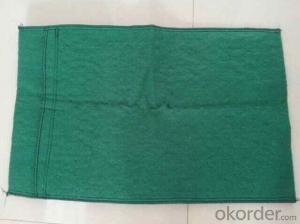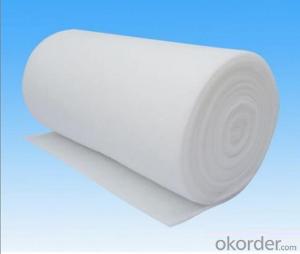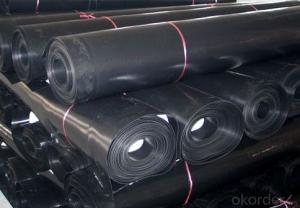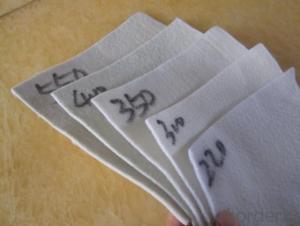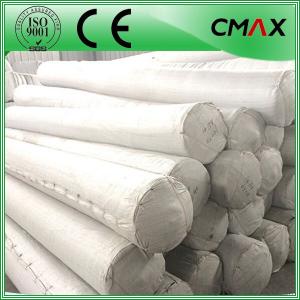High Quality Spun-bond Geotextile
- Loading Port:
- Shanghai Port
- Payment Terms:
- TT or L/C
- Min Order Qty:
- 20000m2 m²
- Supply Capability:
- 20 million M2 Per Year m²/month
OKorder Service Pledge
OKorder Financial Service
You Might Also Like
Specification of Spun-bond Geotextile
specification:100g-800g
material:100% polyester or propylene fiber
width:3m-6m
length:50m-100m
color:as your requirements
Material | PET(polyester) |
Technics/process | Needle punched / thermally bonded |
Specification | 100g/m-1300g/m2 |
Width | 1m6m(as you demand) |
Length | 100m(as you demand) |
Colour | White, black |
Packing | PE film and woven cloth |
Load | According to your specification |
Payment terms | T/T or L/C |
Delivery time | Within 3 weeks |
Application | Geotextiles with various indicators of quality, with good stress -- strain and toughness, seepage performance and uniformity, and width, etc., And is applicable to roads, water, rail, mining dams, rivers, airports and other civil engineering, anyone in the works played reinforcement, segregation, filtration, filtration, drainage, and then extend the project life, reduced cost and easy construction, and it is easy to ensure the quality of the project. |
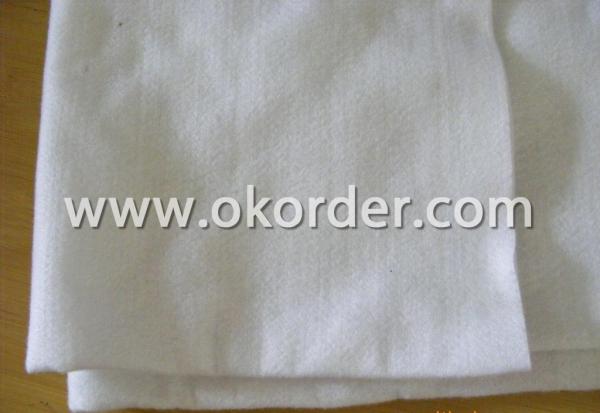
- Q:What are the different geotextile installation techniques in separation?
- The different geotextile installation techniques in separation include direct placement, trench installation, and overlay installation. Direct placement involves laying the geotextile directly on the subgrade or soil surface, providing separation between different layers of soil or aggregate. Trench installation involves placing the geotextile in a trench dug along the separation line, then backfilling the trench with soil or aggregate. This technique is commonly used in applications like road construction. Overlay installation involves placing the geotextile on top of an existing surface, such as an old road, to provide separation between the existing surface and a new layer of soil or aggregate. Each installation technique has its advantages and is chosen based on the specific project requirements.
- Q:How do geotextiles enhance the performance of geocells?
- Geotextiles enhance the performance of geocells by providing additional stability and reinforcement to the structure. They act as a separator between the soil and the geocell, preventing the intermixing of different materials and reducing the risk of soil erosion. Geotextiles also improve the load distribution and filtration properties of geocells, allowing for better drainage and preventing the clogging of the cells. Overall, geotextiles enhance the overall strength, durability, and functionality of geocells in various civil engineering applications.
- Q:What are the different geotextile testing methods?
- There are several different geotextile testing methods, including but not limited to, grab tensile strength testing, puncture resistance testing, tear resistance testing, burst strength testing, and permeability testing. These methods help assess the physical properties and performance of geotextiles in various applications.
- Q:What are the different geotextile filtration testing methods?
- There are several geotextile filtration testing methods used to evaluate the performance of geotextiles. Some of the commonly used methods include the gradient ratio test, the sieve analysis test, the permittivity test, the flow rate test, and the turbidity test. These tests assess the geotextile's ability to filter water, retain soil particles, and prevent clogging.
- Q:Geotextile is what is the role to play with what?
- Geotextile can seep the water penetration, so its use a lot of floods covered in the embankment on the isolation of water supply to the earth dam erosion, placed around the pool to prevent the water inside the pool into the earth, laying in the pollutant storage site to prevent contaminants contaminated land And groundwater, and so on
- Q:What is the number of tensile units for geotextiles
- Geotextile stretch unit number: width of 1 m geotextile in a certain force under the rupture of the strong value. KN / m
- Q:Can geotextiles be used in the protection of embankments?
- Yes, geotextiles can be used in the protection of embankments. Geotextiles are commonly used as a reinforcement material to stabilize the soil and prevent erosion on embankments. They can help to improve the overall strength and stability of the embankment by increasing its resistance to water flow and reducing the potential for slope failure. Additionally, geotextiles can promote vegetation growth, further enhancing the embankment's stability and protecting it from erosion.
- Q:What are the specifications for geotextiles in gas venting projects?
- The specifications for geotextiles in gas venting projects typically include factors such as the required permeability, strength, and durability. The geotextile should have a high porosity to allow efficient gas flow while preventing the passage of fine particles. It should also possess sufficient tensile strength and puncture resistance to withstand installation and long-term exposure. Additionally, UV resistance and chemical compatibility with the surrounding environment are crucial considerations to ensure the geotextile's longevity and performance in gas venting projects.
- Q:The difference between the construction hdpe impermeable membrane and the geotextile
- Hello, this is two different products Geotextile is not seepage, but the role of filtered water HDPE geomembrane is waterproof. Huazhi geotechnical materials manufacturers to answer your questions
- Q:Can geotextiles be used in agricultural drainage systems?
- Yes, geotextiles can be used in agricultural drainage systems. They are commonly used as a filter fabric to prevent soil particles from clogging drainage pipes while allowing water to pass through. Geotextiles help improve the efficiency and longevity of agricultural drainage systems by preventing soil erosion and maintaining the proper flow of water.
1. Manufacturer Overview |
|
|---|---|
| Location | Shandong, China |
| Year Established | 2006 |
| Annual Output Value | US$ 5 Million |
| Main Markets | North America; South America; Eastern Europe; Southeast Asia; Africa; Oceania; Mid East; Eastern Asia; Western Europe; Southern Europ; South Asia |
| Company Certifications | ISO 9001:2000 |
2. Manufacturer Certificates |
|
|---|---|
| a) Certification Name | |
| Range | |
| Reference | |
| Validity Period | |
3. Manufacturer Capability |
|
|---|---|
| a)Trade Capacity | |
| Nearest Port | Qingdao Port |
| Export Percentage | |
| No.of Employees in Trade Department | 10-20 People |
| Language Spoken: | English; Chinese; |
| b)Factory Information | |
| Factory Size: | Above 10,000 square meters |
| No. of Production Lines | Above 6 |
| Contract Manufacturing | Design Service Offered; Buyer Label Offered |
| Product Price Range | High; Average |
Send your message to us
High Quality Spun-bond Geotextile
- Loading Port:
- Shanghai Port
- Payment Terms:
- TT or L/C
- Min Order Qty:
- 20000m2 m²
- Supply Capability:
- 20 million M2 Per Year m²/month
OKorder Service Pledge
OKorder Financial Service
Similar products
New products
Hot products
Hot Searches
Related keywords






